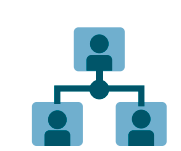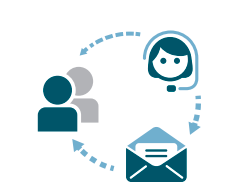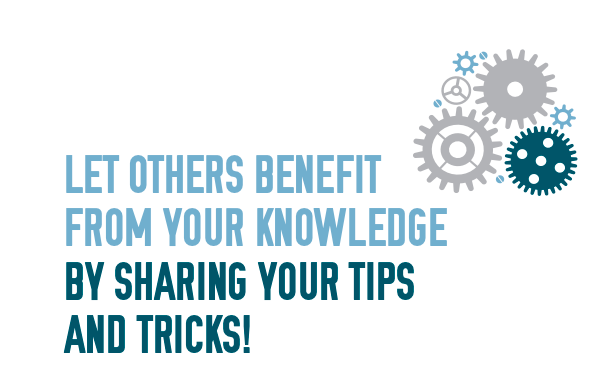Introduction
“Is fundraising always this difficult or am I just bad at it?”
Email and online fundraising has made it easier to get any kind of money, anywhere. It’s possible now to ask people to give you money morning, noon and night, while they bathe and eat and play games on hand-held devices — in email that they sit in front of every day, in mail that they open (or not), in telethons, and races for cures, and walks and any number of gift-wrapping-frozen-pizza-holiday-bizarre way.
The possibilities are limitless, so why is everyone feeling as if all these ways aren’t amounting to much at all? Because they aren’t. It’s not the bad economy, and it’s not the enormous competition for donor funds. It’s ineffective fundraising. It’s poor planning, unmanaged expectations and lack of organization.
The myriad of ways in which you can reach your potential donors means nothing in the face of poorly managed, poorly developed fundraising. If anything, the ability to reach out with impunity makes things that much harder. In our rush to ask, we don’t take the time to plan, measure, adjust and follow-up in ways that support our work.
Truly effective fundraising is as much about the campaigns and the follow-up as it is about the structure and foundation of the organization itself.
Nonprofits struggle with fundraising primarily because they struggle with being organizations on the whole — they are inexperienced or just overwhelmed, under resourced and struggling to survive. Just like many small businesses that struggle with their identity, marketing and growth and living hand-to-mouth, nonprofits commonly guess, pray and rely on hope as a strategy. Surviving on fumes, passion and commitment doesn’t make an effective organization. While more money would help, it won’t solve the underlying cycle of ineffectiveness. Break that cycle with these five steps:
• Build the case
• Map your community
• Craft the strategy
• Plan the tactical work
• Execute the follow up
If you follow each of these steps and use the tools created to support them, you will be well on your way to a stronger organization showing tangible and clearer results.
STEP 1: BUILDTHE CASE 
The case will be the document against which you judge how effective you’ve been and what you need to improve, where you spend your money and who you should reach out to, and how.
The first step is to revisit the basics.
A “case” or rationale for your organization’s existence is a summary document that lays out the basics of why you exist. It is fundamental to both starting and running a nonprofit successfully. It should always be clear, at hand and revisited annually. It is a template for your existence.
Unfortunately most nonprofits fail to go beyond the mission statement. They never lay out their objectives and outcomes. They never walk through the fundamental pieces of building a solid framework for their organization. The good news is it’s never too late to go back and get this done. If you’ve already got one — great, let’s have a look at it.
Six Questions to Answer…
1. Why do we exist?
This is the mission of your organization— your reason for being. It should be simple, direct and clear. What pain are you addressing? It is a short paragraph that gets right to the point. It’s not a page-long essay, an explanation of the ins and outs, a tell-all that is the first and last thing a donor needs to know about your organization. It is a clear and direct statement. Example: Why we exist—Our mission is to address water inequality and disparity issues in communities in the lower Michigan panhandle.
2. What do we do?
These are the goals and objectives. This follows from your mission statement. What are you working to eradicate? What are you working to solve? Remember this is an internal document, it’s the basis of slick marketing itself but it’s not the slick marketing – it’s the raw material.
Unlike the mission, which theoretically doesn’t change, your objectives should be revisited annually
Example: What we do—We provide education and advocacy to the community and work with local and regional lawmakers to make changes to the current infrastructure and process of water distribution.
3. How do we do this?
These are the outcomes, your accomplishments. We sent 300 girls to school; we delivered 2,000 tons of clean water; we helped draft a new constitution for Far-Eastern Far Far Away. These are the tactical, concrete actions, campaigns, projects and their outcomes.
Example: How we do this—We lead public service campaigns, rally citizens, provide clean water and distribute news and information to area citizens.
4. How long have we been doing this?
This is the history of the organization. It provides legitimacy to your case. You’ve been around the block, understand the issue, know how to get the work done and what matters. If you don’t have organizational history (you’re new), tap the personal histories of your leaders, the issue, the community or an individual who has experienced the pain of the issue for a long time. It should be obvious to everyone why your organization is the one for the job.
5. How much does it cost?
This is the budget. Outline the resources you need to achieve your objectives. Money, volunteers, time, space, etc. Be specific.
Example: How much does it cost—The programs we lead cost $500,000 over the course of the year, 60% of which is covered by grants while the rest comes from small donors and in-kind donations.
6. Who’s involved?
This is the structure. Who are the partners, directors, volunteers, etc. that bring the organization to bear? How does this sync with the overall mission and objectives for the organization?
In summary…
The case serves as a summary document — something that delivers the most important information succinctly. All the parts of your case should fit together neatly, obviously and as uncomplicated as possible.
Tell the Story
Once you have your basics, the next step is to build out stories that represent your work. This is where you create your marketing and promotional items, messages and requests. This is where your work so far can be put to the test. If you go to write an email asking for something — is what you are asking for clear? Does it support your mission? Is it part of your objectives?
It’s not enough to polish up the executive summary of the case and make it slick for public consumption. People are moved by story.
A story is where you offer up a compelling picture, a powerful anecdote, an experience that connects the audience to what you do and inspires them to act. Use details, a personal story, imagery, sound and creativity in relaying the information. Remember, the audience is less interested in the fact that you delivered 500 water filters to five low income neighborhoods than they are drawn into the story of how one family saved $100 a month by drinking clean water from their faucet instead of buying plastic bottles that went into the local landfill.
The Power of a Solid Case
The power of a solid case is in how it helps guide the organization. It’s less a map and more a compass.
With the case as a reference document you can now ask yourself; does this project support our mission? Are we thanking donors based on our outcomes? Are we asking for support around our objectives? Are we muddying the water by being unclear in an attempt to underscore a need? Are we presenting ourselves accurately? Is it clear in our communications/ events/fundraisers that people know who we are and why we exist? Could our biggest supporters build a case that resembles the one we’ve created here or would they say we were doing other things for other reasons? Do our communications combine to make one coherent story?
The clarity of a complete case is immeasurable in its power.
Find worksheets for building a case and developing a compelling story, and a useful gauge for judging future campaigns at www.orchidconnect.com/5ES-Fundraising
STEP 2: MAP YOUR RELATIONSHIPS
Once you have your case, you need to build a map of your supporters so as to better understand your own universe. This is a map with several dimensions: circles of support, frequency of giving, longevity of giving, and size of gift. You’ll also need to proactively understand a little more about why people give to your organization. Before you start, check your assumptions at the door; this process is only beneficial if it’s based on real data.
Looking at how people support your organization, why and at what level will help you gauge how viable the organization itself is and how effective a fundraising campaign is likely to be. If you are launching a major giving campaign and only have a handful of supporters at that level you wouldn’t and shouldn’t expect to raise a lot of money. You wouldn’t expect to fill the streets with protestors if your go-to email list was only a couple hundred names. Many campaigns are launched with unrealistic expectations simply because no one took the time to look closely at what the community was capable of at a particular point in time.
Circles of Support
As a nonprofit, you rely on the help and support outside your organization. These are your circles of support that radiate out from the organization itself. The further out from the center, the more diffuse the support.
Innermost Circle
Out of the center, is your “innermost circle”: the go-to circle. These should be the people you can count on in the middle of the night. These people contribute sweat and actively support your organization. Actively. The inner circle absolutely believes in the mission and in invested in the success of the organization. Your staff and board should be in this circle. Now is a good a time to look closely at who they are and what they contribute to see if they truly are part of the inner circle. This is an opportunity to be honest about them and their contribution. If they are a lukewarm employee, a weak or inattentive board member, start laying plans to shore up the circle with people who can and do support the organization and your mission.
Organizations without a strong inner circle find it much harder to weather difficult times.

Friends and Families
Friends and family support you, read your emails, sign up for your pledge drives and contribute. If you don’t feel comfortable putting people into this category, then ask yourself why. Do you have doubts about them or do you have doubts about your organization? They needn’t be big contributors, but they need to exist and you need to know who they are. Friends and family are your voice, they spread your word and they are an important part of any nonprofit.
Allies
Allies are other organizations. No going it alone; you have to have help. You have to have partners. They do similar work or are similarly minded. A strong ally shares networks, pushes messages out for you, draws their own community to your events. These allies get the same time and attention from you. Together you are stronger, get more done but still occupy distinct areas of concern/activity/ community.
Supporters
Your supporters are the masses — everyone else. They are people on your email lists, Facebook pages, twitter feeds. They are people who’ve given once or just “liked” your Facebook page. They are the mass of people you could reach out to and make a plea to in an emergency; their value is in the volume, not within each piece of data. Once you’ve gotten your map together – you should have a sense of where your weak points are. It’s important that you have a clear idea of what and who those are. It’s important also for you to think about how you might strengthen some of these rings. If your weakness is in not knowing, not being able to come up with the lists, then systems and metrics are something that you should move to get a hold of.
If it can’t be measured, it can’t be fixed.
Other Dimensions of the Map
Most nonprofit fundraisers will say that there are three primary dimensions of donors: level (size of gift), frequency (who often someone gives) and longevity (the history of a donor’s support). Each of these perspectives provides a different view into your donor population and thereby guides the ways you can build support and funding levels.
Level of Support
Start with your basic donor data. Pull a list of all donations made to your organization over the last year. Sort them by funding level and determine reasonable breakdowns for amounts. It’s not important what those breakdowns are so much as that you have reasonable categories within the context of your organization. You should be able to see how things tend to break down. This might be because of the options with which you present small-dollar donors with or it might be driven by some other factor – grants or the like. Make note of these patterns wherever they are apparent.
Frequency of Support
Frequency of support is a pattern you should also be able to get your hands on pretty easily. Who are all the people who only give at the holidays? Who are the people that only contribute when you send out your annual report? Who is a recurring donor? Are there others that give every few years? Are there other patterns that suggest themselves once you start looking at the numbers? The importance of this information lies in understanding what might trigger a gift and how you might support that trigger or expand the effects. After you’ve understood the frequency, look to see if there is a level of support that is obvious within these patterns. Perhaps the people that only give at the holidays tend to give $50 at a time as opposed to the folks that give two or three times a year with $20 at a time. Whatever it is should help you better understand the nature of your donor population.
History of Support
Looking at the history of the donor population is multifold. What percentage gives just once? What percentage are long time donors? Who are the long time donors? What triggered their initial relationship and how invested are they in the organization? Why are new donors donating just once and then not again? Is keeping a donor easier than acquiring a new one? Too frequently nonprofits fail to spend time and energy to keep a donor once they have them. Is this the case with you? What other things are you guilty of when you look at these statistics?
Get the tools: Find additional goal and calendering tools by going here: www.orchidconnect.com/5ESFundraising
Why People Give
It’s hard to say exactly why people give, even if you think you know. Don’t make the mistake of assuming you know, find out. Some people will only give in someone else’s name or because it makes them feel good or because they feel obliged or because they simply always have and they no longer think about why. It’s important to find out the most common of reasons why people give as a way of gaining insight into what your messaging does for your organization. Too often organizational leaders are so beleaguered and exhausted by their efforts, too aware of their personal and organizational failings that they are afraid to ask why people support them.
STEP 3: CRAFT THE STRATEGY
Now I have a map, where can I go with it?
Once you have an understanding of your donors — a map of your world— you can start building a strategy to strengthen different areas, bring others into focus and build deeper support across the board.
Within each category of your map, drill down and identify the people or the classes of people that can be pressed to move or evolve. If there is someone that has given at the holidays $250 for five years running, have they been asked to go up? Are there people who’ve given erratically that you might interest in a recurring donor campaign to give monthly? Are there recurring donors who’ve stopped giving not because they did so intentionally but because their credit cards expired and you never followed up to correct that?
No one has the answers to all this, and it’s not always obvious by looking but it’s possible to start to surface these ideas in a tactical session with staff and key supporters. Remember that people support your organization because they believe in the work. Understanding their belief and looking at ways they might be able to become more connected to the work isn’t just about asking for money — it’s about making the connection between their contribution and the impact.
This may feel like a very tactical exercise but try to keep it in the strategic realm by thinking through both behaviors and emotional or philosophical connections people have with your work. If people want to connect with other supporters and that strengthens your base of support, then make that possible with face-toface fundraisers.
STEP 4: PLAN TACTICAL WORK
Let’s get on the ground.
The tactical approach is the concrete doing — email campaigns, dinner parties, races and walks, pledge drives, member drives, grant seeking, the works.
Drive a Calendar
Print out a year-long calendar (there are a few to choose from in the tools link at orchidconnect.com). Start wherever you are. Regardless of what your fiscal year is remember that your supporters live in a calendar year, so take that perspective into consideration. With the calendar in front of you mark any major events – conferences, meetings, banquets, galas. Add also other things that take a lot of fore-planning like printing and shipping, savethe-date, etc.
Back out of all these milestone events with preparation milestones but more importantly communication milestones. When you are done, you should have a year-long calendar of all the heavy things that will dominate your schedule. Add to this any consistent emails or newsletters you put out: a quarterly newsletter, a monthly alert. Then look across the board and see if there are holes. Are you committing to a lot of content or too many events in the beginning of the year? Are you bad at communications except when it comes to putting your hand out around the holidays? Be careful not to over commit but be aware of where there are gaps in your output and where you are overwhelming yourself.
Set Goals
Next set goals — not just money goals but also other key performance indicators — how many new names? How many new contacts? How many renewed contacts? How many partners? Whatever is an indicator of some level of success think it through and add it to your calendar. You want to have something to aim for and also something to adjust — the goals aren’t written in stone and there is nothing sacred about them. If you need to adjust your goals because reality became that much more crystalline — at least you have something to adjust. Try to keep these numbers concrete.
Make sure you know what your numbers are now so you have a baseline to judge against. If your goal is to get 200 new donors, you have to know how many you’re starting with. Likewise for any metric: likes, friends, followers, whatever makes sense inside your organization.
Are you goal oriented or averse to them? Are your goals viable? Sustainable? Do they fit the strategy?
Too often the only metric anyone is paying attention to in fundraising is money in the bank. It’s a shortsighted perspective because there are many valuable stops along the route to success. You have to know if you are progressing in the right direction. Without the other metrics, it’s impossible to know clearly where you are and how to get better at what you are doing before it’s too late. If your facility to measure is not robust, change your metrics to follow surrogates — you might not be able to measure “supporters” but certainly “emails” would work. You don’t know how many of those Facebook “likes” will turn into anything but knowing the trends of liking and sharing will tell you something about the ways you are touching your community and where you are getting traction.
Make sure that for every metric you decide is part of a goal there’s a way to track that metric. More supporters? How will you know you have more supporters? Get very concrete here.
STEP 5: EXECUTE FOLLOW-UP
It’s often said that nonprofit fundraising is 10% outreach and 90% follow-up. Let’s call it 20% and 80%. It is essential that you build a rigorous follow-up process into your fundraising plan, calendar and expectations. When it comes to pledging, if someone pledges and fails to make good our scarcity mindset leads us to conclude they’ve changed their minds or we’re not worthy, when in reality it’s more likely that they just forgot. One thing is certain though — you won’t know unless you ask. Follow up when someone pledges, follow up when they don’t.
Follow-up also goes for your own outreach. Keep it consistent and clear. Be clear enough about your numbers and map from above to know when things change. You might have too many supporters to know each one, but you should have a sense of the populations. Are your small dollars declining? Are the $5K pledges getting harder to come by? Are donors who’ve been giving for years in decline?
It pays to be on top of the numbers. It’s a fulltime job in itself, so make sure your systems are in place to spit out the right numbers at the right time so you can catch a trend before it’s too late and you’re struggling to understand what went wrong. Recognize the opportunities to touch people when they actually want to be touched. Followup with a thank you when someone pledges for the first time, and the fifth time and every time. Universally donors feel under-appreciated, so make sure yours aren’t. Following up is nothing but a good excuse to touch a supporter that has already told you they believe in your work.
ADDENDUM
About the Series
The Origin:
This series is drawn from twenty years serving nonprofit organizations and enterprises as a consultant, product developer, service provider and chief executive. Tanya Renne designed and built technology solutions to meet a wide range of needs including fundraising, member and event management, content distribution and online communications. Along the way, she has made countless mistakes, dealt with a wide range of issues and witnessed plenty of success, all the while bumping her head on everything sharp. What she has learned is nothing that can be packed easily into boxes and sent your way. However, what she can offer is these essential tips and tools to help you more effectively serve the greater good and get where you’re going.
The Focus:
Her bias in this arena is always toward technology and communications with a heavy emphasis on metrics. Why? Because nonprofits are tragically lacking in data driven strategy. Measurement, careful planning and modeling can be powerful tools in driving fundraising efforts and producing significant results inside and outside the organization.
Is this for You?
If you work in or with a nonprofit organization looking to optimize fundraising efforts, this edition of the series is for you. Start with being willing to get down to brass tacks, answer questions and trust the process. Be prepared to confront any fears you might have about numbers and data. If you need help, you can learn more about Tanya and her services at her blog, www.MetricsAndModels.com and Give Well (www.orchidgiving.com/ blog). She can also be reached at tanya@orchidconnect. com. Good luck and happy fundraising!
About the Author:
Tanya Renne, CEO and founder of Orchid Connect, has 20 years of experience guiding non-profit leaders in strategy, technology and measurement.

If you would like to contribute your experience or have a comment/suggestion, please enter it on the toolkit's online form.

Stay Connected
Sign up for updates straight to your inbox.
